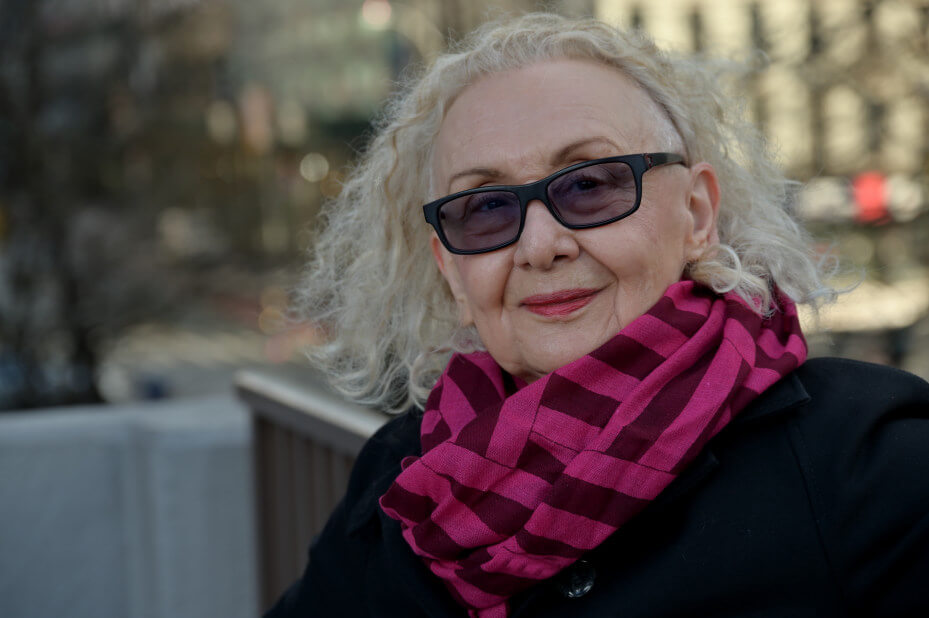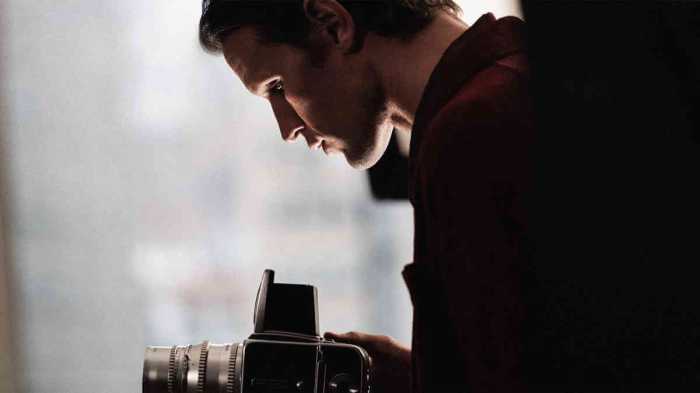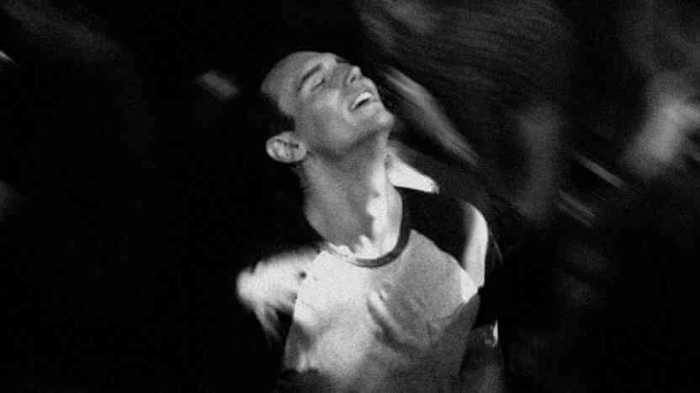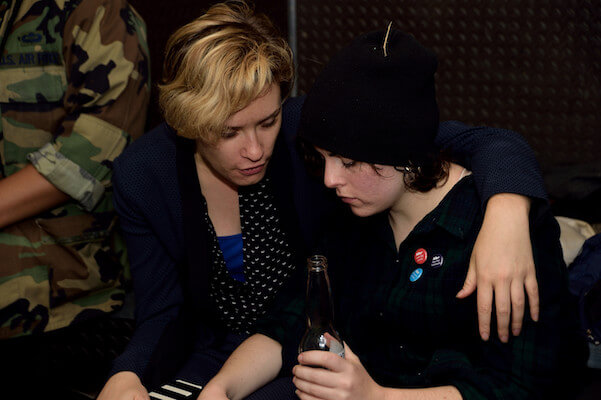For a decade and a half beginning in the early 1970s, out lesbian Roberta Degnore was an intimate witness to one of the most remarkable partnerships in queer art history — between Robert Mapplethorpe, who would go on to become what former New York Times picture editor Philip Gefter called America’s “bad boy photographer,” and Sam Wagstaff, a prominent art curator and collector who was Mapplethorpe’s lover as well as his “mentor and career impresario,” again in Gefter’s words.
At first blush, Mapplethorpe and Wagstaff may seem to have been an odd couple. Mapplethorpe, then in his 20s, grew up near the Queens/ Long Island line, had abandoned his graphic design studies at Brooklyn’s Pratt Institute, and was beginning his photography career even as he also designed jewelry. From 1967 until 1972, he lived with singer, songwriter, and poet Patti Smith, first as her boyfriend and later as her lifelong intimate buddy.
Wagstaff, 25 years his new lover’s senior, was raised on Central Park South and graduated from Yale, was viewed as an elegant eligible catch on the New York debutante ball scene, and had held prestigious curator positions at the Wadsworth Atheneum in Hartford and the Detroit Institute of Arts.
But if Wagstaff was to the manor born, at least as early as when he was in his 40s by the 1960s, he was “always in rebellion against his conservative and upper class background,” according to writer Joan Juliet Buck, who narrated James Crump’s 2007 documentary about him. Throughout the 1970s and ‘80s, Wagstaff became a major collector of photography — helping speed the art world’s full embrace of it as a valid and valued artistic endeavor — even as he and Mapplethorpe, after meeting at a party in 1972, pursued a romance that over time evolved, as had Mapplethorpe’s with Smith, into an enduring intimate bond.
Mapplethorpe would soon shoot to the status of art world star, due in large part to his audacious work capturing the gay BDSM scene — including his notorious self-portrait with a whip handle coming out of his ass — as well as for his male nudes, some of which drew criticism for their sexualized focus on Black bodies. The couple were part of the BDSM world themselves as well as the drug adventurism then de rigueur in Manhattan’s downtown art scene.
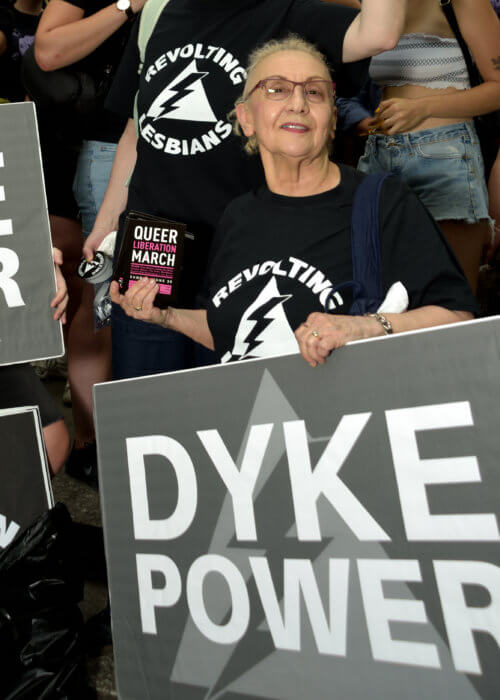
If Wagstaff’s relationship with Mapplethorpe was surprising given the older man’s background, so too was his friendship with Roberta Degnore, who grew up in “desperately middle class” surroundings near the Eight Mile Road divide between Detroit and its suburbs to the north. Like Mapplethorpe, Degnore was decades younger than Wagstaff, and she had earned her bachelor’s degree as well as a master’s in psychology from Wayne State University before coming to New York “to escape Detroit, to be free.” Her mother’s unwelcoming shock at learning about Degnore’s sexuality played no small part in her decision.
“We were obstinately and ruinously close for 15 years until AIDS murdered him in 1987,” Degnore wrote of her relationship with Wagstaff in a recent essay on Medium.com.
In recollections of their times together she discussed with Gay City News, Degnore described a strikingly handsome man who “was like a character out of a movie, a Rock Hudson type,” with whom she shared “a voracious appetite” for learning new things — as well as a whole lot of weed, coke, and laughs.
Their bond was so tight, in fact, that it was Degnore who was entrusted with a sacred mission at the time of Wagstaff’s death — the destruction of a raft of photos of him taken by Mapplethorpe, many of them intimate and presumably explicit, that the photographer himself agreed should never see the light of day.
Degnore was in graduate school at CUNY working on her psychology Ph.D. when her artist girlfriend, whose work Wagstaff had defended while he was at the Detroit Institute of Arts, took her to meet him.
“He was the great man,” Degnore recalled. “She told me not to speak to him.”
When they arrived at Wagstaff’s apartment, Mapplethorpe was there, wearing a bracelet decorated with skull figures. Her girlfriend, who was a metalist, quickly fell into conversation with Mapplethorpe about the bracelet’s making, and Degnore and Wagstaff smoked a joint and started gabbing. They each immediately recognized a kindred spirit.
In time, she would learn things about Wagstaff that he wouldn’t even share with Mapplethorpe.
“I think it’s because I wanted nothing from him – not a show like my girlfriend did, not exposure like Robert did,” Degnore said of the strength and endurance of their bond, even while conceding, “I did use him much later for my doctoral dissertation on the psychology of public art.”
But Degnore has also written that it’s “a lie” that she wanted nothing from Wagstaff.
“I wanted everything that was Sam, and he gave it,” she wrote, elaborating to Gay City News that his knowledge of art and his unquenchable thirst for knowledge and for exploring new things were the draw.
Wagstaff would hire sea planes so they could drop in at Fire Island, shared confidences with Degnore, let her see that he was a patrician with holes in his socks who would baby-talk to his cat. And she, in turn, could make him laugh — something that didn’t necessarily come naturally to a man from what Getty Museum curator Gordon Baldwin described as a “starchy background.”
Degnore also witnessed his prejudices, what Deborah Solomon, in her New York Times review of Gefter’s 2014 biography of Wagstaff, termed his “unsavory habit of making sexist, racist, and anti-Semitic comments.”
“I was the audience for his spittle-flying wrath at whatever offended his privileged white-man cemented judgments,” Degnore said, noting, “I could tell him he was full of shit.”
If Degnore offers intimate insight into a leading late 20th century art collector, she also gained canny insights into Mapplethorpe as well.
“I used to call him Mr. Bitchy,” she recalled, mentioning several incidents that showed the petty jealousies of a famed artist.
Mapplethorpe and Wagstaff both had birthdays on November 4. When Degnore was picking out a birthday present for Wagstaff one year, she came across a daguerreotype she thought would make a nice addition to his already impressive collection of the genre. She bought it as a gift and, with a bottle of champagne in hand, headed over to Wagstaff’s apartment. When she arrived, Mapplethorpe was there and she remembered it was his birthday too and so pretended the champagne was meant for him.
“Nobody believed that, but we drank it and it was fine,” she recalled.
But Degnore could tell Mapplethorpe was put off by what a perfect gift she had found for Wagstaff.
“He was very protective of his friendship with Sam, and with Patti, too,” she said.
It was not long afterward that Mapplethorpe tried to get even by challenging her to join him at the Mineshaft, the Far West Village BDSM den he frequented. Degnore called his bluff, though she admitted she wasn’t up for staying there too long once “Robert went off to do his thing.”
As Mapplethorpe spent more and more time out late at night or out of town, the romance with Wagstaff sputtered, and, in Degnore’s account, the photographer tried to make it up to him by “sending him a fuck” — hair stylist Jim Nelson. Much to Mapplethorpe’s chagrin, Nelson proved to be more than just a fuck — he stayed with Wagstaff.
“Robert didn’t like that,” Degnore recalled.
Still, the chaps and whips remained in Wagstaff’s closet.
In 1987, as Wagstaff was dying of AIDS, he told Degnore she would have to do something for him when he succumbed but she would find out about that later. When Wagstaff died, Nelson instructed her to destroy a stash of pictures that Mapplethorpe had taken of Wagstaff. The photographer himself soon phoned to make sure she had gotten the message. Degnore also helped Mapplethorpe spirit a collection of fine silverware out of Wagstaff’s sealed apartment. (Mapplethorpe would come to agreement with Wagstaff’s surviving sister about the disposition of his assets prior to his own death from AIDS complications in 1989.)
Degnore made clear that the photos were intimate and said some included young men who shared the same “gamine” features that had originally attracted Wagstaff to Mapplethorpe. Asked whether the photos portrayed sex among the men or if Mapplethorpe himself was pictured, she would not elaborate. Nor has she in a just-completed memoir, “Me and the Man Who Made Mapplethorpe,” that she hopes to have published soon.
The support Degnore got from Mapplethorpe in the wake of Wagstaff’s death changed her relationship with the photographer.
“I never called him Mr. Bitchy again,” she said.
In discussing her memoir on Medium.com, Degnore — who currently teaches a course at FIT on the psychology of how one’s perception of their gender is affected by their fashion choices — acknowledged her anxiety that baring the intimacies of her long friendship with Wagstaff could in some ways be a betrayal.
Wagstaff’s involvement in the BDSM world is known, she said, but less so is his drug use. Her memoir will also inevitably address his prejudices — as well as his vulnerabilities. In his younger days in New York’s elite social circle, he was often his mother’s escort — “It was just something he did,” Degnore explained. Meanwhile, Wagstaff was dealing with a stepfather who repeatedly warned him, “Don’t bring your sissy friends around here.”
Degnore also admitted to her own “trepidation” at putting herself in the limelight, but said Wagstaff’s life deserves greater attention.
“Certainly he’s never gotten the publicity that Robert and Patti have gotten,” she said. “Sam was a maker. He made Robert — intimately — and he made him as an artist. It’s important to remember what we lost.”
The timing for that story may just be right given the ongoing interest in Mapplethorpe’s own legacy. On April 2, Samuel Goldwyn Films will release the director’s cut of Ondi Timoner’s 2018 “Mapplethorpe,” in which Matt Smith (the young Prince Philip in the first two seasons of “The Crown”) plays the photographer and John Benjamin Hickey (Tony winner for the 2011 revival of Larry Kramer’s “The Normal Heart”) is Wagstaff.
More significantly, this coming November 4 will mark the 100th anniversary of Sam Wagstaff’s birth. For Degnore, surely a century is time enough to have the legacy of “the great man” aired in full.
To sign up for the Gay City News email newsletter, visit gaycitynews.com/newsletter.

